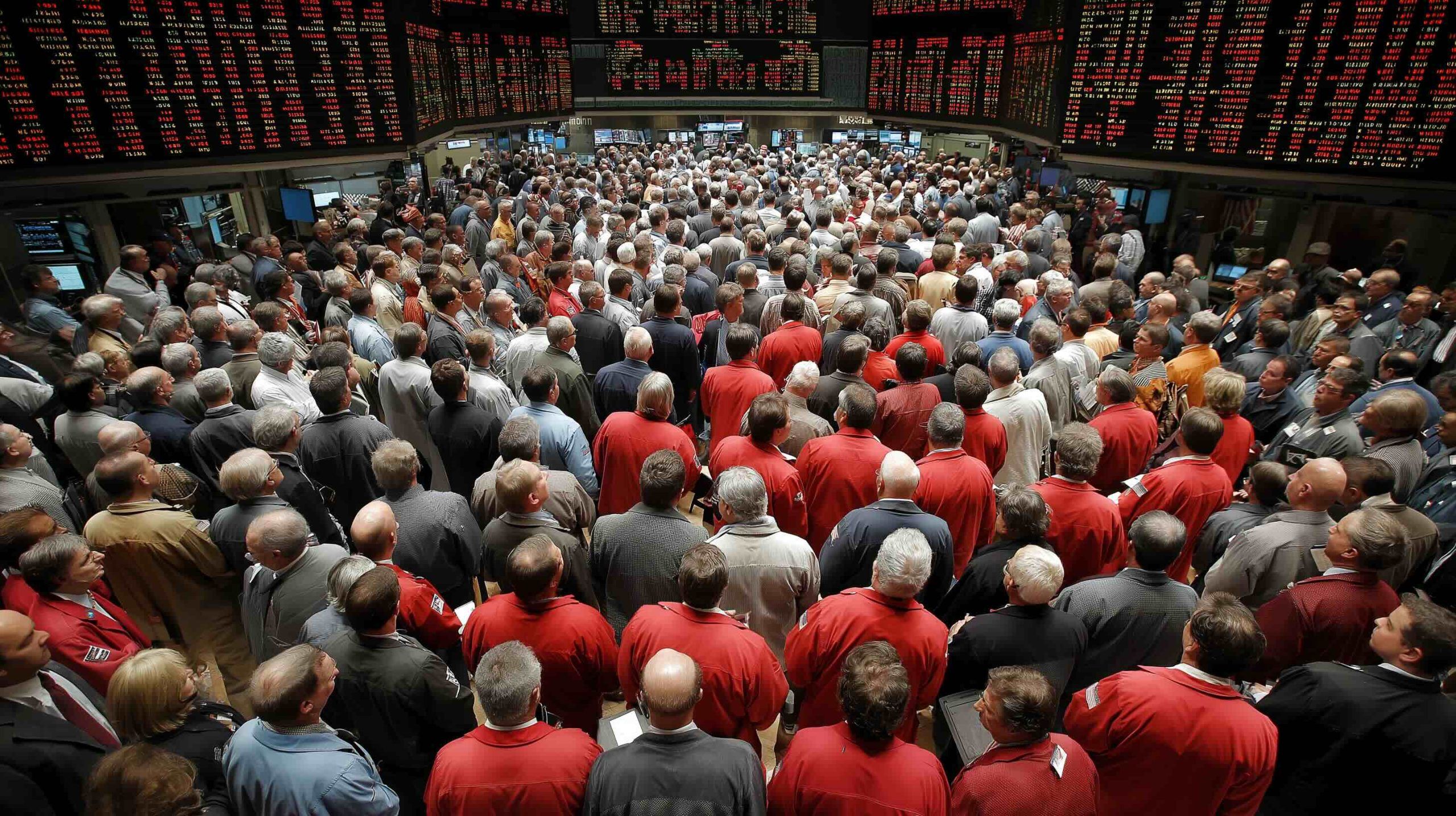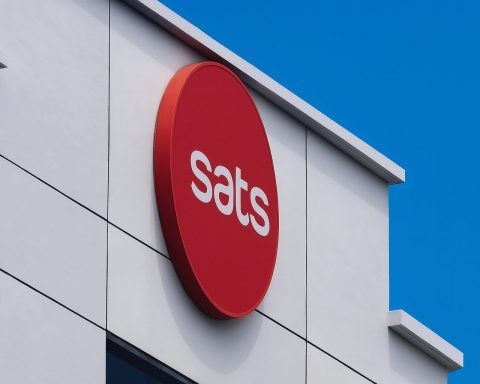- Amazon’s Blowout Boost: Amazon stock surged ~10% to a record high on Friday after its Q3 earnings smashed expectations, with cloud unit AWS growth re-accelerating to +20% YoY [1] [2]. The company raised its sales outlook above analysts’ estimates, turbocharging the Nasdaq and consumer discretionary sector [3] [4]. Analysts remain bullish – virtually all covering firms rate Amazon a “Buy,” with price targets ~18% above pre-rally levels [5].
- Apple’s Record Quarter & Caution: Apple topped earnings forecasts and CEO Tim Cook projected the “best-ever” holiday quarter with 10–12% revenue growth (about double Wall Street’s forecast) amid “off the chart” demand for the new iPhone 17 [6] [7]. Apple’s stock hit ~$271 in late trading Thursday (~$4 trillion market cap) [8], but closed down 0.4% Friday as Cook flagged supply constraints that could cap near-term sales [9].
- Markets Post Weekly & Monthly Gains:Tech earnings fueled a broad rally to end October. On Oct. 31, the Nasdaq Composite jumped +0.61%, the S&P 500 +0.26%, and the Dow +0.09% [10]. All three indexes finished the week higher and logged strong October gains, with the Nasdaq up 4.7% for the month (its 7th straight monthly rise, longest since 2018) and the S&P 500 up 2.3% (6th straight month, best streak since 2021) [11] [12]. Mega-cap tech leaders – the “Magnificent Seven” – jumped about 2.6% on Friday’s rebound [13].
- Stock Futures Signal Optimism: U.S. equity futures leapt on the earnings news. As of Friday morning Oct. 31, S&P 500 futures were up +0.6% and Nasdaq 100 futures +1.2%, while Dow futures were flat [14] [15]. The strong after-hours moves came as Amazon’s stock spiked ~13% and Apple rose ~3–4% in extended trading late Thursday following their results [16] [17].
- Crypto Stock Comeback:Coinbase (COIN) jumped ~5% after delivering better-than-expected Q3 results. The largest U.S. crypto exchange beat sales and profit forecasts, reporting increased trading volumes from both retail and institutional clients amid growing optimism on U.S. crypto regulation [18] [19]. CEO Brian Armstrong highlighted Coinbase’s expansion into prediction markets and tokenized assets in its push to become an “everything exchange” [20].
- Nvidia’s AI-Fueled Milestone:Nvidia briefly became the first company ever to hit a $5 trillion market cap this week, underscoring feverish demand for AI-driven chips [21] [22]. Its stock eased slightly Friday (–0.2%) after a 2% drop the day prior [23], but the AI titan announced a blockbuster deal to supply 260,000 of its advanced GPUs to South Korea’s government and tech giants (like Samsung) as the country builds out massive AI infrastructure [24] [25]. Experts caution, however, that sky-high valuations may face tests ahead – heavy AI investments by firms like Meta have stoked some “tech bubble” jitters, and only those who monetize AI quickly “will win” in the long run [26].
- Fed Uncertainty Tempers Euphoria: Despite upbeat earnings, interest rate jitters persist on Wall Street. Two Federal Reserve officials struck a hawkish tone Friday, with Atlanta Fed President Raphael Bostic warning a December rate cut is “not guaranteed”, contrary to investor hopes [27]. Traders have swiftly pared back expectations of a near-term Fed easing – the implied probability of a December rate cut slid to 65% (from ~92% a week ago) [28]. “The theme today is pretty similar to yesterday: earnings coming in a little better than expected but tempered by a little more hawkish commentary from the Fed,” noted James Ragan, director of wealth management research at D.A. Davidson [29]. Another strategist cautioned that investors “may have gotten in front of their skis” in betting on quick rate cuts [30], suggesting the recent rally could pause or pull back if higher-for-longer rates persist [31].
Markets Rally on Big Tech Earnings
Wall Street shook off mid-week tech jitters and ended October on a high note. On Friday (Oct. 31), U.S. stocks climbed after blowout results from Amazon and Apple reignited risk appetite [32]. The tech-heavy Nasdaq Composite rose +0.6%, the benchmark S&P 500 gained +0.3%, and the Dow Jones Industrial Average edged up +0.1% [33]. This rebound came just a day after a sharp pullback – earlier in the week, Meta’s earnings miss and hefty AI spending had spooked investors, dragging the Nasdaq down over 1.5% on Thursday [34] [35]. But Amazon’s and Apple’s upbeat reports late Thursday swiftly flipped the script, lifting sentiment across the market.
Amazon’s surge alone gave a major boost to indexes Friday. The e-commerce and cloud giant’s shares soared 9.6% to an all-time high after it forecast stronger-than-expected holiday-quarter sales [36]. Amazon’s rally helped the consumer discretionary sector jump 4% – its biggest one-day gain since May [37]. Apple’s stock, meanwhile, saw more tempered trading. Despite posting robust results and a bullish outlook, Apple closed down 0.4% Friday as investors digested news of possible iPhone supply constraints [38]. (Apple’s slight dip followed a huge run-up – the stock had already climbed ~3–4% in after-hours trading on its earnings beat, touching record highs around $271/share before pulling back [39] [40].)
Overall, October finished as a banner month for equities. The Nasdaq, S&P 500, and Dow all notched weekly and monthly gains [41] [42]. In fact, the S&P 500 and Dow each logged their sixth straight monthly advance, their longest winning streaks since 2021 and 2018 respectively [43]. The Nasdaq Composite surged 4.7% in October, its seventh consecutive monthly gain – the tech index’s best streak in over seven years [44]. Year-to-date, the Nasdaq is now up roughly 23%, outpacing the S&P 500 (+17%) and Dow (+12%) [45]. These sustained gains underscore how resilient investor confidence has been in 2025, driven largely by mega-cap tech leadership. As one market watcher quipped, Wall Street’s rally has been “turbocharged” by Big Tech’s performance, with the so-called “Magnificent Seven” stocks (Apple, Amazon, Nvidia, Microsoft, Alphabet, Meta, Tesla) collectively propelling the Nasdaq higher [46].
Yet under the surface, not all sectors shared in the spoils. While tech and growth stocks roared back at week’s end, some pockets of the market lagged. For example, grocers and consumer staples stocks fell on Friday amid worries a U.S. government shutdown could hit food assistance spending [47]. And despite largely positive Q3 earnings overall (over 83% of S&P 500 companies have beaten forecasts so far, vs ~67% normally [48]), a few high-profile disappointments triggered big selloffs – Meta plunged 11% Thursday on concerns about its “eye-watering” AI capex, and DexCom sank ~15% Friday after soft guidance for 2026 [49] [50]. Volatility remains in certain names, reminding investors that even in a rising market, stock selection matters.
Amazon Stock Soars on Blowout Earnings
Amazon.com (AMZN) delivered the kind of quarter Wall Street had been waiting for, smashing expectations and igniting a relief rally in its long-lagging stock. The e-commerce and cloud titan reported Q3 revenue of $180.2 billion, up 13% year-on-year, with earnings of $1.95 per share – easily topping consensus estimates of around $1.58 [51]. Crucially, growth accelerated in Amazon’s crown jewel Amazon Web Services (AWS) division. AWS sales jumped +20% YoY, the fastest growth rate since 2022, which calmed fears of a cloud slowdown after more tepid numbers earlier in the year [52]. “AWS is growing at a pace we haven’t seen since 2022,” CEO Andy Jassy noted, as businesses ramp up AI workloads on Amazon’s cloud platform [53]. The strong cloud results – along with booming advertising revenue – helped offset rising costs and even a one-time $2.5 billion charge for an FTC legal settlement [54]. In short, Amazon proved its profitability and top-line momentum remain intact despite earlier doubts.
Investors cheered the news emphatically. Amazon’s stock rocketed 10–13% in after-hours trading on Oct. 30 following the earnings release, jumping from about $227 to over $240 per share [55]. By Friday’s close, AMZN settled up +9.6% at a new record high, roughly $241, marking a stunning turnaround for a stock that had lagged all year (it was up only ~4% year-to-date pre-earnings, worst among Big Tech) [56]. After months of underperformance, Amazon is now “breaking out,” traders say – a push above ~$242 (its February 2025 high) could open the door to the $270+ range next [57]. The earnings-fueled surge also vaulted Amazon’s market cap back above $1.3 trillion and solidified its place among the most valuable U.S. companies.
Wall Street analysts are optimistic Amazon’s revival has legs. Virtually all 50+ analysts covering the stock rate it a Buy, and the average 12-month price target sits around $268 – implying roughly 18% upside from before the earnings jump [58]. Firms like JPMorgan and BofA highlighted Amazon’s robust ad growth and retail trends, and many expect AWS’s 20% growth clip to continue, which could “give AMZN stock a boost” into 2024 [59]. Amazon’s own guidance reinforced this confidence: the company issued a strong Q4 sales forecast, coming in above analysts’ estimates for the holiday quarter [60]. That upbeat outlook helped convince the market that Amazon’s post-pandemic investments are paying off. The company even held an early October “Prime Big Deal Days” sale that saw record customer turnout, boding well for Q4 shopping demand [61].
Management is doubling down on key growth initiatives. Amazon has been investing heavily in AI, launching new Alexa AI features and taking a $4 billion stake in startup Anthropic to enhance its AI capabilities [62]. It’s also partnering with the NBA on AI analytics and hiring 250,000 seasonal workers for the holidays [63] – moves that signal Amazon’s confidence heading into the crucial holiday season. “Nearly all analysts” see these investments paying off; at ~29× forward earnings, Amazon’s valuation is viewed as reasonable given its double-digit growth in cloud and advertising [64]. In short, Amazon’s Q3 triumph has not only vindicated believers but also put the stock firmly back on the radar as a potential leader of the market’s next leg higher.
Apple Beats Forecasts and Sees “Best-Ever” Holiday Quarter
Just hours before Amazon’s blowout report, Apple Inc. (AAPL) delivered an upbeat surprise of its own – and offered a bullish roadmap for the coming holiday season. For its fiscal Q4 (July–September), Apple posted revenue of $102.5 billion (up 8% YoY) with earnings of $1.85 per share, narrowly beating analyst expectations [65]. It was a record September quarter for the world’s largest company. Impressively, every major segment showed growth: iPhone sales surged to $49 billion (their best growth in 3 years), Services revenue hit an all-time high of $28.8 billion, and even Mac, iPad, and wearables notched modest gains [66]. This broad strength underscored the resilience of Apple’s ecosystem. CEO Tim Cook noted on the earnings call that Apple beat on both the top and bottom lines, and the board responded by hiking Apple’s dividend to $0.26/share [67] – a sign of confidence in future cash flows.
The real show-stopper, however, was Apple’s forward guidance. Cook told Reuters that he expects the upcoming December quarter to be Apple’s “best ever”, projecting 10–12% revenue growth year-over-year [68]. That blows past Wall Street’s prior forecasts (which were around 6–7% growth) and implies Apple is on track for all-time high sales this holiday season. “We expect the December quarter’s revenue to be the best ever for the company and the best ever for iPhone,” Cook declared confidently [69]. He cited extraordinary demand for the new iPhone 17, saying it’s “off the chart” – even as supply constraints (and a delayed China launch) have caused some shipping backlogs [70]. Apple is racing to fulfill orders for its latest devices, which Cook joked is a “good problem to have” given the robust consumer interest [71]. In other words, Apple is bullish that it can overcome any production hiccups and smash its sales records in the year-end quarter.
Investors initially reacted positively to Apple’s news. In late trading Thursday, Apple shares jumped ~3.7%, closing around $271 – near a 52-week high and valuing Apple at roughly $4.0 trillion [72]. That gain put Apple within a whisker of its all-time high and briefly lifted its market cap above the milestone $4 trillion mark (Apple is the world’s second-most-valuable company, behind only Nvidia in market value) [73]. However, by Friday’s session, some of that enthusiasm had cooled. Apple’s stock slipped 0.4% on Friday even after its strong outlook [74]. The slight pullback was largely attributed to management’s warning on supply issues – Cook acknowledged that certain high-end iPhone 17 models remain hard to keep in stock due to component constraints [75] [76]. This raised the specter that Apple could be leaving some sales on the table in the short run if production can’t meet the frenzied demand. “Supply constraints are a reality, but it’s a good problem to have,” Cook quipped, emphasizing that demand is far outstripping supply for now [77].
Despite the minor stock dip, analysts viewed Apple’s quarter as a clear positive. The company proved it can still generate growth across hardware and services even in a mature phase, and its iPhone 17 cycle appears to be a hit. Many on Wall Street believe Apple’s push into new technologies – like AI-powered features and augmented reality (with Vision Pro on the horizon) – plus a loyal user base of over a billion devices, will continue to drive high-margin services revenue growth. With Apple forecasting double-digit gains next quarter, some analysts are now raising their targets. Apple’s year-to-date stock gain stands around 8% (through Thursday), and some foresee momentum picking up into 2026 amid the upgrade cycle for the iPhone 17 and beyond [78] [79]. In short, Apple delivered exactly what investors wanted: solid results, upbeat guidance, and reassurance that the world’s most valuable company is still firing on all cylinders heading into the crucial holiday stretch.
Coinbase Rallies as Crypto Sentiment Improves
It wasn’t just Big Tech enjoying a post-earnings pop – the crypto sector saw a notable winner in Coinbase Global (COIN), as improving digital asset sentiment gave the exchange a lift. Coinbase, the largest U.S.-based cryptocurrency exchange, reported third-quarter results that beat Wall Street’s expectations, suggesting that the crypto winter of 2022–2023 may be thawing. The company surpassed forecasts on both revenue and earnings, benefiting from a recent pickup in trading activity [80] [81]. Coinbase’s stock surged about 4.7% on Friday in response (adding to an already strong October rally for crypto-related shares) [82]. Year-to-date, Coinbase had been struggling, but the latest quarter’s success has helped shares rebound and claw back some losses.
In its earnings release, Coinbase highlighted gains in both retail and institutional trading volumes during Q3 [83]. This uptick coincided with a broader recovery in crypto prices – Bitcoin, for instance, hovered near $110K at week’s end (after hitting an all-time high earlier in the month) [84]. Optimism surrounding the U.S. regulatory outlook for digital assets also bolstered activity [85]. Crypto markets have been buoyed by hopes that the SEC will eventually approve Bitcoin ETF products and clarify rules, relieving some uncertainty for exchanges and investors. Coinbase’s CEO Brian Armstrong struck an upbeat tone on the earnings call, outlining the company’s vision to become an “everything exchange” for the crypto economy [86]. He noted that Coinbase is expanding into new offerings like prediction markets and tokenized assets to diversify its revenue beyond just trading fees [87]. These initiatives – part of Coinbase’s strategy to offer a one-stop shop for all things crypto – could open up fresh income streams if successful.
The market appears to be taking notice of Coinbase’s strategic moves. The stock’s ~5% jump on Friday added to what has been a strong month, coinciding with MicroStrategy (MSTR) – a major corporate holder of Bitcoin – also rallying nearly 6% after its own earnings beat [88]. Such parallel moves signal that investor confidence is returning to crypto-linked equities, after a prolonged slump. Still, Coinbase faces challenges ahead: regulatory compliance costs remain high, and trading volumes (and crypto prices) can be notoriously volatile. But for now, with crypto sentiment on the mend and Coinbase executing well, some analysts see brighter days ahead. The company has trimmed expenses and focused on product innovation during the downturn, which could pay off handsomely if the crypto market continues to normalize. As one highlight, Coinbase’s strong quarter showed that interest in digital assets is far from dead – a welcome sign for the broader crypto ecosystem.
Nvidia News: AI Deals and a $5 Trillion Valuation Milestone
Nvidia (NVDA) – the chipmaker at the heart of the AI boom – made headlines yet again as it reached unprecedented heights. This week Nvidia briefly became the world’s first $5 trillion company, a stunning valuation milestone that reflects the market’s enormous expectations for AI technology [89]. On Wednesday, a surge in Nvidia’s share price amid continued AI enthusiasm pushed its market capitalization above the $5 trillion mark, surpassing even Apple (at ~$4 trillion) as the planet’s most valuable corporation [90]. Nvidia’s meteoric rise (its stock has rocketed over 50% in 2025 alone) underscores how investors have been betting big on AI – essentially viewing Nvidia’s advanced GPUs as the “picks and shovels” powering the AI revolution. “Nvidia’s valuation [nearing] $5 trillion amid AI euphoria” shows how eagerly the market has embraced the company’s prospects [91].
By Friday, Nvidia’s stock cooled slightly – it dipped 0.2% as some traders took profits after the big run-up [92]. There was also a bit of overhang from earlier in the week when Meta’s earnings (with heavy AI spending) sparked a sell-off in semiconductor names like Nvidia on Thursday [93] [94]. But any hesitation was short-lived, as Nvidia delivered fresh news to justify the hype. Nvidia announced a major deal to supply more than 260,000 of its latest AI chips to South Korea, in partnership with some of the country’s largest tech conglomerates [95] [96]. The agreement, unveiled Friday, will see Nvidia’s cutting-edge “Blackwell” GPUs deployed across South Korea’s government and companies like Samsung, SK Group, Hyundai and others, as the nation invests heavily to become a regional AI hub [97] [98]. This flurry of deals is part of Nvidia’s global expansion drive, finding new markets for its AI hardware beyond China (where U.S. export restrictions have limited sales) [99]. CEO Jensen Huang, fresh from meeting South Korea’s president, touted that Korea can now “produce intelligence as a new export” with Nvidia’s help [100]. The sheer scale – a quarter-million-plus chips – underscores unrelenting demand for Nvidia’s AI processors from governments and industry.
Even as Nvidia’s growth story marches on, some analysts urge a note of caution. Valuing any company at $5 trillion requires a belief in near-flawless execution and massive future profits. Skeptics point to potential risks: if AI adoption or spending slows, Nvidia’s lofty multiples could face pressure. There are already hints of competition rising in AI chips (competitors like AMD, and new custom silicon from cloud providers). And as seen with Meta and others, soaring AI capital expenditures can give investors pause about tech companies’ margins [101]. “Investors have largely defied warnings of a tech bubble,” one commentator noted, but questions remain if current AI winners can sustain their momentum [102]. For now, however, Nvidia’s achievement is undeniable – it has ridden the AI wave to become one of the most richly valued enterprises ever. The company’s quarterly earnings (due in a few weeks) will be the next big test to see if its financial performance can keep justifying the hype. In the meantime, Nvidia’s blockbuster South Korea deal and other partnerships show that demand isn’t letting up. As long as the AI gold rush continues, Nvidia appears poised to remain at the forefront, though investors will be watching closely for any signs of overheating in the AI boom.
Outlook: Fed Clouds and Market Forecasts
As the calendar turns to November, investors are cautiously optimistic but mindful of potential headwinds. The stellar earnings from tech giants have provided a tailwind for the market, but the next chapter may be dictated by macroeconomic factors – especially the Federal Reserve’s policy path. This week’s events illustrated a key dynamic: strong corporate earnings vs. sticky interest rate fears. “The theme [on Wall Street] is earnings coming in a little better than expected but tempered by a little more hawkish commentary from the Fed,” observed James Ragan of D.A. Davidson [103]. In other words, even as profits surprise to the upside, the market’s upside is being capped by concerns that the Fed may not ease up as quickly as hoped on monetary policy.
Indeed, in the wake of the Fed’s late-October meeting (where it delivered a rate cut), officials have struck a cautious tone. On Friday, Atlanta Fed President Raphael Bostic warned that another rate cut in December is not a sure thing, pushing back against the notion that an easing cycle is locked in [104]. Cleveland Fed’s Loretta Mester (via proxy in this case, Fed Governor Beth Hammack) revealed she opposed the October rate cut, citing still-high inflation [105]. These hawkish remarks caught traders’ attention. Market-implied odds of a December rate reduction fell to around 65%, down sharply from about 92% just a week prior [106]. In short, the bond market and Fed watchers are now less convinced the central bank will rush to cut rates further. Yields on the 10-year Treasury hovered around 4.08% at week’s end, a touch lower on the week but still elevated [107], reflecting the push-pull between cooling inflation and the Fed’s cautious stance.
What does this mean for stocks? Potentially, continued volatility. High-growth sectors (like tech) that led the charge could see choppier trading if interest rates remain higher for longer, since lofty stock valuations are more sensitive to discount rates. Some money managers warn that the market may have “gotten ahead of its skis” in pricing in Fed easing [108]. “Investors may have gotten in front of their skis” with optimistic rate-cut bets, cautioned Jake Seltz of Allspring Global, meaning there’s risk of a pullback if those bets don’t pan out [109]. Additionally, the geopolitical and Washington backdrop remains in flux – the U.S. government shutdown (now over a month old) adds uncertainty and has even halted the release of some economic data [110], putting more weight on corporate earnings as economic signals.
On the positive side, the fundamental underpinning of this rally – robust corporate earnings – is still intact. As noted, over 83% of S&P companies have beaten Q3 estimates, well above the historical norm [111]. This suggests corporate America is proving resilient, and if the trend continues, equities could find support from earnings growth even if valuations face interest-rate pressure. Moreover, seasonal trends are turning favorable: November and December are historically strong months for stocks, and the market often enjoys a year-end “Santa Claus rally” if economic conditions are stable. Many analysts also argue that AI and tech spending will remain a powerful secular tailwind into 2024, potentially offsetting cyclical drags. For instance, Amazon’s and Microsoft’s commentary about cloud/AI demand, and Apple’s projected blowout holiday quarter, indicate that business and consumer spending on technology remains healthy.
Stock futures will likely take their cue from incoming data and Fed communications. After the upbeat tech earnings, futures were pointing higher heading into the first week of November [112] [113]. Investors will closely watch the next Fed meeting in December, as well as key reports like CPI inflation and jobs numbers (once the government dataflow resumes) to gauge whether the Fed might change course. Any signs that inflation is easing faster or growth is slowing could reignite hopes for rate cuts – a scenario that would be bullish for stocks (especially rate-sensitive sectors). Conversely, if the economy remains too hot, the Fed may hold rates elevated, testing the market’s mettle.
In summary, the U.S. stock market enters November with strong momentum thanks to Big Tech’s earnings fireworks, but also with a dose of trepidation about policy and macro risks. The backdrop of multi-decade high interest rates, ongoing Fed uncertainty, and external wildcards (from Washington politics to overseas conflicts) means the path forward might not be as smooth as October’s gains imply. Still, many experts believe the bullish forces – a solid economy, cooling inflation, and outstanding corporate execution – could carry the rally onward. “Earnings remain the bright spot,” as Kim Forrest of Bokeh Capital noted, adding that with government data limited, investors are leaning on company results for economic insight [114]. So far, that insight has been reassuring. If companies continue to deliver and the Fed doesn’t spring any negative surprises, the final months of 2025 could see the market grinding higher. But if there’s one lesson from this week, it’s that the Fed’s words can pack nearly as much punch as Big Tech’s numbers. Investors will need to balance the euphoria of tech earnings with the reality of central bank policy as they navigate the rest of the year’s market journey.
Overall, after a “trick or treat” week on Wall Street, the bulls still have the upper hand – but they’ll be watching the Fed as closely as the latest earnings tape in determining what comes next [115] [116].
References
1. www.reuters.com, 2. ts2.tech, 3. www.reuters.com, 4. www.reuters.com, 5. ts2.tech, 6. ts2.tech, 7. ts2.tech, 8. ts2.tech, 9. www.reuters.com, 10. www.reuters.com, 11. www.investopedia.com, 12. www.reuters.com, 13. ts2.tech, 14. www.investopedia.com, 15. www.investopedia.com, 16. ts2.tech, 17. ts2.tech, 18. www.investopedia.com, 19. www.investopedia.com, 20. www.investopedia.com, 21. www.investopedia.com, 22. www.reuters.com, 23. www.investopedia.com, 24. www.reuters.com, 25. www.reuters.com, 26. ts2.tech, 27. www.reuters.com, 28. www.reuters.com, 29. www.reuters.com, 30. www.reuters.com, 31. ts2.tech, 32. ts2.tech, 33. www.investopedia.com, 34. ts2.tech, 35. ts2.tech, 36. www.reuters.com, 37. www.reuters.com, 38. www.reuters.com, 39. ts2.tech, 40. www.reuters.com, 41. www.investopedia.com, 42. www.investopedia.com, 43. www.reuters.com, 44. www.reuters.com, 45. www.investopedia.com, 46. ts2.tech, 47. www.reuters.com, 48. www.reuters.com, 49. www.investopedia.com, 50. www.investopedia.com, 51. ts2.tech, 52. ts2.tech, 53. ts2.tech, 54. ts2.tech, 55. ts2.tech, 56. ts2.tech, 57. ts2.tech, 58. ts2.tech, 59. ts2.tech, 60. www.reuters.com, 61. ts2.tech, 62. ts2.tech, 63. ts2.tech, 64. ts2.tech, 65. ts2.tech, 66. ts2.tech, 67. ts2.tech, 68. ts2.tech, 69. ts2.tech, 70. ts2.tech, 71. ts2.tech, 72. ts2.tech, 73. www.investopedia.com, 74. www.reuters.com, 75. ts2.tech, 76. www.reuters.com, 77. ts2.tech, 78. ts2.tech, 79. ts2.tech, 80. www.investopedia.com, 81. www.investopedia.com, 82. www.investopedia.com, 83. www.investopedia.com, 84. www.investopedia.com, 85. www.investopedia.com, 86. www.investopedia.com, 87. www.investopedia.com, 88. www.investopedia.com, 89. www.reuters.com, 90. www.investopedia.com, 91. ts2.tech, 92. www.investopedia.com, 93. ts2.tech, 94. ts2.tech, 95. www.reuters.com, 96. www.reuters.com, 97. www.reuters.com, 98. www.reuters.com, 99. www.reuters.com, 100. www.reuters.com, 101. ts2.tech, 102. ts2.tech, 103. www.reuters.com, 104. www.reuters.com, 105. www.reuters.com, 106. www.reuters.com, 107. www.investopedia.com, 108. www.reuters.com, 109. www.reuters.com, 110. www.reuters.com, 111. www.reuters.com, 112. www.investopedia.com, 113. www.investopedia.com, 114. www.reuters.com, 115. www.reuters.com, 116. ts2.tech







